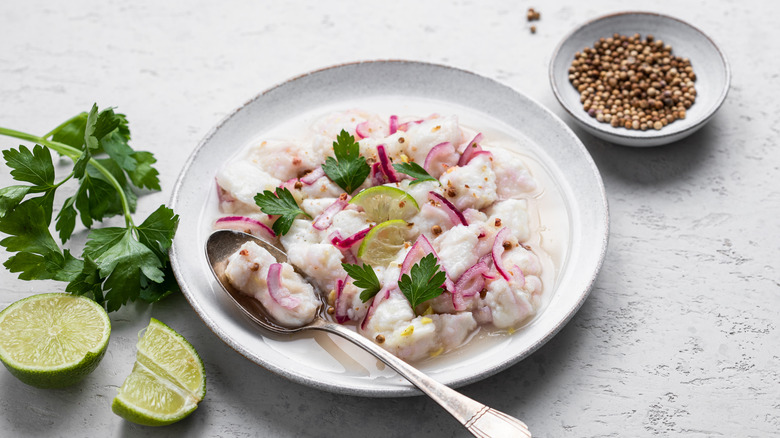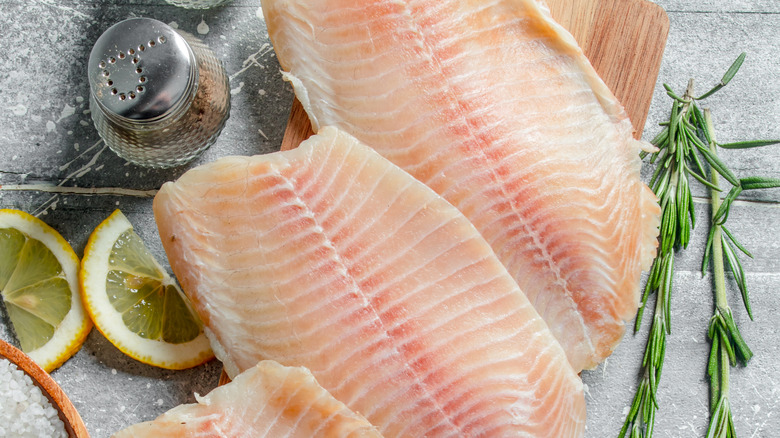For The Best And Safest Ceviche, There's One Type Of Fish You Should Avoid
A staple of Latin cuisine, ceviche has become an increasingly popular fish dish served all over the world. It's a fresh and punchy meal based on chunks of raw fish that are "cured" in citrus juice and mixed with herbs, spices, and other flavorings. The fish here isn't technically cooked, but the acid in the citrus breaks down the proteins to turn it opaque, more solid, and suitable for eating ... in most cases. Caution should always be taken when eating raw seafood, and choosing the right fish for your ceviche in the first place can save you from a meal prep mistake that can lead to food poisoning.
When serving raw fish, pro chefs use top-quality seafood, which mainly means that it's fresh and sourced from salt water. You should avoid freshwater fish at all costs because they are the most likely to contain parasites — specifically species like cod, trout, perch, and minnows. These can carry lung flukes and tapeworms, common parasites that are frequently passed from raw fish to humans. This is why you almost never see them used in dishes like ceviche or sushi. Saltwater species are less likely to carry toxic parasites, so stick to classic ceviche choices like sea bass, tilapia, or a few juicy shrimp thrown on top.
Keeping your ceviche safe
The safety of your ceviche doesn't stop at just choosing the right fish — you also have to know how to prepare it properly. Tips for buying and handling raw seafood include wearing gloves and cutting up the fish after all the other ingredients. Even though the fish in ceviche will eventually touch the other ingredients, preparing it last means only washing your board once, saving you the hassle of extra cleaning. You can also keep your cutting board clean using parchment paper to further mitigate the risk of spreading raw fish juices around your kitchen.
Another mistake people make with raw meat and fish is not keeping it cold enough while handling it. You want to keep the fish as cold as possible for freshness, which means keeping it in the fridge until it's ready to eat and never leaving it out on the counter. Ceviche is also meant to be served chilled, so keeping the raw seafood cool will enhance the outcome of the dish. While it may seem excessively laborious to deal with raw seafood, that first fresh and citrusy bite of ceviche is always worth the extra precautions.


